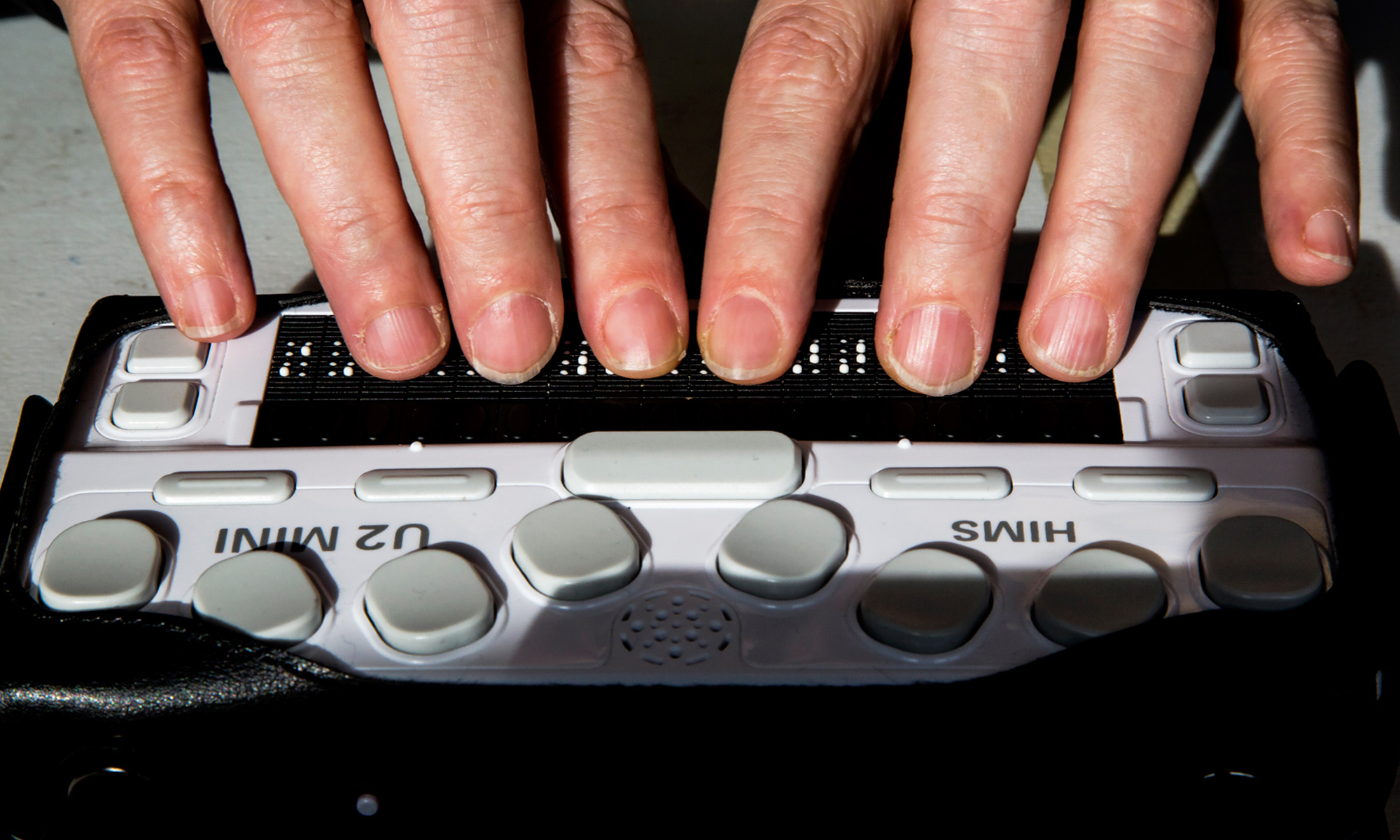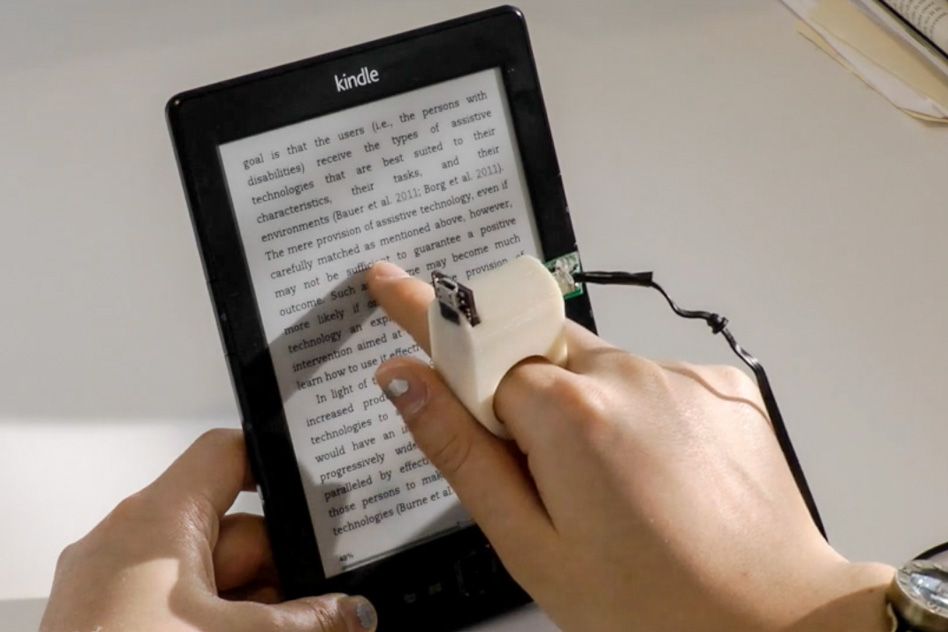Screen Readers for the Blind: Accessing Information Without Barriers
Discover Innovative Devices Made for the Visually Impaired
The advancement of innovative devices for the aesthetically impaired stands for a significant improvement in availability and freedom. Technologies such as clever glasses with AI capacities and mobile applications designed to supply acoustic descriptions are improving day-to-day experiences for customers. Furthermore, wearable tools that use haptic responses boost environmental understanding, while modern Braille technologies use new methods to engage with message. As these tools continue to evolve, their influence on the lives of those with aesthetic problems elevates crucial concerns regarding the future of inclusivity and freedom in numerous elements of life. What lies in advance in this technological landscape?
Smart Glasses for Navigating
Smart glasses designed for navigating are revolutionizing the means aesthetically damaged individuals interact with their setting. These sophisticated gadgets utilize a mix of camera modern technology, artificial intelligence, and acoustic comments to give real-time information about surroundings. By employing challenge detection systems, clever glasses can alert users to possible threats, allowing safer movement in both familiar and unknown settings.
The integration of GPS modern technology further boosts navigation capabilities, allowing users to get auditory directions as they relocate. This hands-free strategy not only cultivates freedom but also encourages visually damaged individuals to browse city landscapes with boosted confidence. Additionally, several wise glasses are outfitted with attributes that identify spots and street indicators, offering contextual information that enhances the individual experience.
Moreover, the growth of these devices is consistently progressing, with business functioning to enhance the precision of object recognition and broaden the series of navigational attributes. As clever glasses come to be much more inexpensive and accessible, they hold the prospective to significantly change every day life for aesthetically impaired users. Ultimately, these cutting-edge tools represent an essential step towards inclusivity, offering enhanced mobility and a higher feeling of freedom for people navigating the globe around them.

Mobile Application for Daily Living
Exactly how can mobile applications enhance the every day lives of visually impaired individuals? Mobile apps are reinventing the way visually impaired customers navigate their atmospheres, handle everyday tasks, and gain access to details. These applications give essential assistance with numerous functionalities, cultivating self-reliance and enhancing quality of life.
A number of innovative mobile applications are created especially for day-to-day living. As an example, apps like Be My Eyes attach visually damaged individuals with sighted volunteers through video clip calls, permitting them to receive real-time support with jobs such as checking out tags or browsing unknown spaces. Seeing AI, established by Microsoft, uses artificial intelligence to define environments, reviewed message, and recognize objects, properly transforming a smartphone into a powerful tool for everyday assistance.
Furthermore, navigating apps customized for the aesthetically impaired, such as Aira and BlindSquare, use audio-based instructions and ecological info, enabling customers to traverse their environments safely and with confidence. Beyond navigating and immediate help, mobile applications also sustain company and job monitoring, with features that help individuals establish suggestions, develop order of business, and track appointments. In recap, mobile applications work as essential sources, equipping aesthetically impaired individuals to lead even more independent and meeting lives.
Wearable Technologies for Support
Empowerment with technology is significantly obvious in the world of wearable tools designed to aid visually damaged individuals. These innovative devices integrate effortlessly right into every day life, enhancing navigation and supplying essential comments to individuals. As an example, clever glasses geared up with cams can review and identify faces message out loud, permitting individuals to engage even more with confidence in social and professional setups.
One more notable advancement is the use of haptic responses systems in wearable gadgets. These systems use resonances or various other tactile signals to convey info concerning the individual's atmosphere, such as obstacles or adjustments in surface, improving mobility and safety. Wearable innovations additionally consist of wristbands that connect to smartphones, signaling users to notices with subtle vibrations, therefore boosting connection without reliance on aesthetic cues.
As these innovations remain to evolve, they are not only boosting self-reliance for aesthetically damaged individuals but additionally cultivating a higher sense of incorporation in society. By connecting the gap in between challenges faced in everyday living and the possibility for autonomy, wearable innovations act as crucial devices in the quest for equal rights and empowerment for those with visual problems.
Sound Description Devices
Audio summary devices play an important duty in enhancing access for visually damaged individuals, offering them with the capacity to involve with visual media. Smart glasses for the visually impaired. These tools provide narrated summaries of vital visual aspects in films, television programs, and live efficiencies, making sure that users can totally understand the context and emotions communicated via visuals
Audio summary can be integrated right into numerous platforms, consisting of streaming solutions, movie theater screenings, and live cinema. Many popular streaming solutions currently include audio description as an accessibility function, allowing visitors to choose it quickly. In addition to traditional media, specialized apps additionally exist, providing audio summaries for art exhibits, galleries, and various other social occasions.
The effectiveness of audio summary rests on the ability of the storytellers, that need to communicate visual information succinctly without interfering with the original audio. Technologies in this area are also leading the means for even more customized experiences, where users can readjust the level of information and pacing according to their choices.
Braille Innovations and Tools
Braille tools and innovations have considerably changed the method aesthetically damaged individuals connect with text and info. Modern advancements have basics led to the advancement of versatile devices that improve literacy and self-reliance among customers.
Furthermore, mobile Braille notetakers integrate conventional Braille input with modern performances, promoting note-taking, organizing, and document editing and enhancing on the go. Voice-activated assistive devices. These small devices typically feature text-to-speech capabilities, bridging the gap between Braille and acoustic details
Furthermore, cutting-edge Braille printers have arised, allowing users to create Braille labels, records, and academic products effectively. This accessibility promotes higher engagement in instructional and specialist settings, ultimately advertising inclusivity.
Moreover, research study into smart Braille innovations remains to broaden. Devices that integrate man-made knowledge are being discovered to supply real-time navigation assistance and contextual details, enhancing the customer experience in varied setups. In general, these advancements mirror a dedication to equipping visually damaged individuals with modern technology, ensuring they can easily accessibility and involve with the globe around them.

Final Thought
The development of innovative tools for the visually damaged dramatically boosts freedom and lifestyle. Smart glasses, mobile applications, wearable technologies, audio description devices, and Braille technologies jointly encourage people by supplying necessary navigating support, ecological awareness, and click this improved reading experiences. These innovations not only foster higher inclusion however additionally promote freedom in daily activities, eventually adding to a more available and equitable society for aesthetically impaired individuals. Continued growth in this field holds promise for additional improvements.
As smart glasses become a lot more budget friendly and obtainable, they hold the prospective to significantly transform day-to-day life for aesthetically impaired customers. Mobile applications are transforming the way visually impaired users navigate their settings, manage daily tasks, and gain access to details. Applications like Be My Eyes attach aesthetically impaired individuals with sighted volunteers by means of video clip telephone calls, permitting them to get real-time aid with tasks such as checking out tags or navigating strange rooms.In addition, navigation applications customized for the aesthetically impaired, such as Aira and BlindSquare, offer audio-based instructions and environmental details, enabling try here individuals to traverse their environments safely and with confidence.The innovation of ingenious tools for the aesthetically impaired considerably enhances freedom and top quality of life.